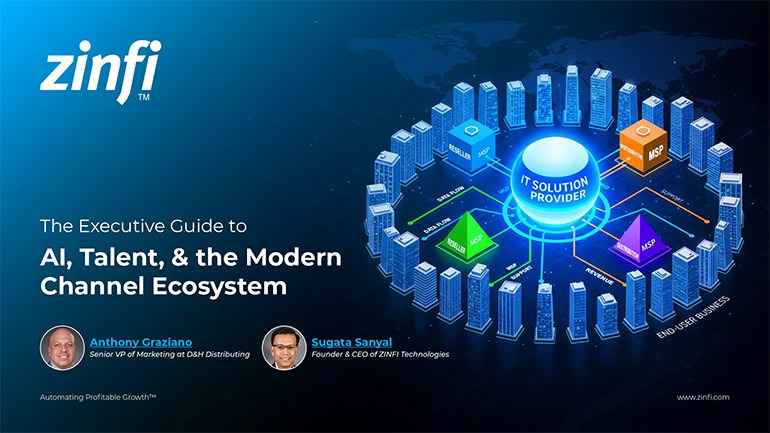Glossary - How to - Partner Portal Automation Tools
How to Choose the Best Partner Portal Automation Tools?
Introduction
What Are Partner Portal Automation Tools?
Partner portal automation tools are software platforms designed to streamline and automate various processes within a partner ecosystem. These tools help businesses manage partner relationships, onboard partners, streamline communication, track performance, and distribute resources efficiently. A partner portal is a centralized hub where partners can access sales and marketing assets, training materials, deal registration forms, incentive programs, and more. Organizations can enhance partner engagement, reduce administrative burden, and drive more revenue by automating these elements.
Relevance to Partner Management Automation and PRM
In Partner Relationship Management (PRM), automation is critical. Manual processes can lead to errors, inefficiencies, and partner dissatisfaction. You can automate repetitive tasks like onboarding, lead distribution, training certification, and reporting by integrating partner portal automation tools into your PRM strategy, leading to faster execution, greater scalability, and enhanced partner satisfaction—all crucial for the success of a PRM program. A well-automated portal ensures that your partner management processes are agile, consistent, and data-driven.
Key Takeaways:
Define Your Business Needs and Goals:
Before selecting a partner portal automation tool, define your business objectives. Are you aiming to improve partner onboarding, enhance content distribution, or streamline deal registration? A clear understanding will help you select features that align with your goals.
Evaluate Core Features and Capabilities:
Look for essential features such as:
- Partner onboarding and training automation
- Content management system (CMS)
- Deal registration workflows
- Incentive and rewards programs
- Advanced analytics and reporting
Make sure the platform supports multi-language and multi-currency functionality if you operate globally.
Ensure Seamless Integration with Existing Systems:
The portal should integrate seamlessly with your CRM, marketing automation tools, ERP, and other enterprise systems, avoiding data silos and enabling a holistic view of partner performance.
Prioritize User Experience (UX) and Customization:
An intuitive and user-friendly interface will encourage partners to engage actively with the portal. Look for customization options to tailor the portal layout, branding, and workflows to your business model.
Assess Scalability and Support Services:
Choose a solution that can grow with your business. Check for flexible licensing models, support for multiple partner tiers, and access to technical support, onboarding assistance, and ongoing training resources.
Summary of Key Takeaways:
Selecting the right partner portal automation tools involves understanding your unique business needs, evaluating platform capabilities, ensuring system integration, prioritizing UX, and planning for future scalability. A strategic choice will optimize partner interactions and drive long-term success in your partner ecosystem.
Key Examples:
- Automotive Manufacturing: In the automotive sector, partner portal automation to provide dealers with real-time access to marketing materials, product catalogs, and technical specifications. Automated training modules ensure dealership staff remain knowledgeable about new vehicle launches and service procedures.
- Consumer Electronics: Consumer electronics brands rely on portal automation to distribute product updates, marketing collateral, and warranty registration workflows. Automated reward systems incentivize retailers to promote new product lines.
- Energy Production: Energy companies use partner portals to manage complex sales processes across regional and international distributors. Automation provides technical documentation, compliance training, and lead sharing in a regulated industry.
- Financial Services: In financial services, partner portals automate the dissemination of compliance updates, promotional materials, and sales training resources, ensuring advisors and resellers are well-equipped to meet customer needs while adhering to regulations.
- Food and Beverage: Food and beverage brands use portal automation tools to standardize product training, marketing campaign execution, and distributor onboarding across different geographies, ensuring consistent messaging and service quality.
- Healthcare Services: Healthcare providers leverage portal automation to manage various channel partners, including equipment distributors and service vendors. Automated workflows manage compliance documentation, educational content, and service updates.
- Information Technology: IT vendors employ partner portal automation to streamline deal registrations, manage solution certifications, and distribute co-branded marketing assets. Automation ensures rapid response times and empowers partners to sell more effectively.
- Pharmaceutical Development: Pharmaceutical companies use automated portals to distribute research findings, clinical trial updates, and training programs to partners such as contract research organizations (CROs) and healthcare providers.
- Retail Industry: Retail brands utilize partner portals to synchronize product launches, seasonal campaigns, and inventory updates with franchisees and resellers, ensuring market readiness and consistent branding.
- Telecommunications: Telecom companies leverage portal automation to manage a network of resellers, installation contractors, and technology partners. Automated systems support deal registrations, commission tracking, and promotional campaign rollouts.
Conclusion:
Partner portal automation tools are indispensable for organizations seeking to scale their partner ecosystems efficiently. Businesses can achieve higher partner satisfaction, operational excellence, and accelerated revenue growth by selecting the right solution based on business needs, core functionalities, integration capabilities, UX focus, and scalability potential. Industries across the board—from automotive to healthcare—are witnessing significant gains from adopting portal automation strategies. Implementing these tools within your Partner Relationship Management (PRM) strategy is not just a modernization step; it’s a strategic move towards future-proofing your partner network.
Associated Keywords:
- Partner Portal Best Practices
- How to Automate Partner Portals
- Choosing PRM Automation Tools














